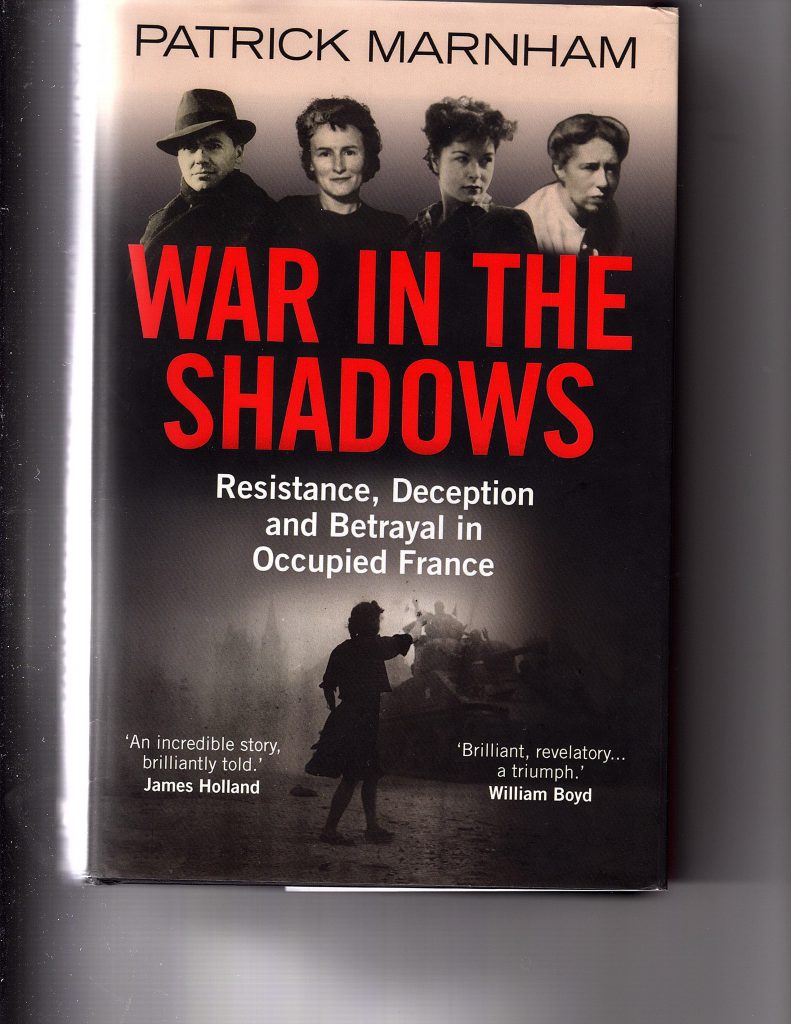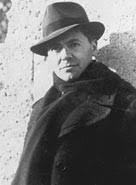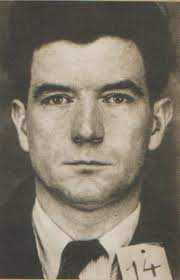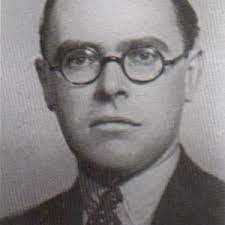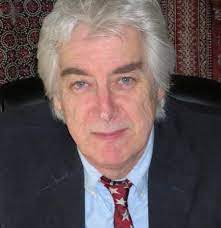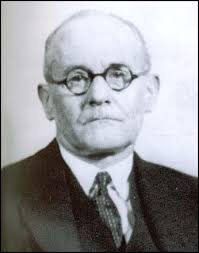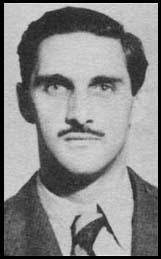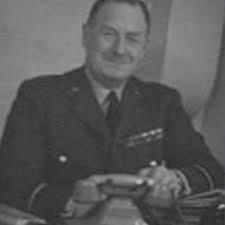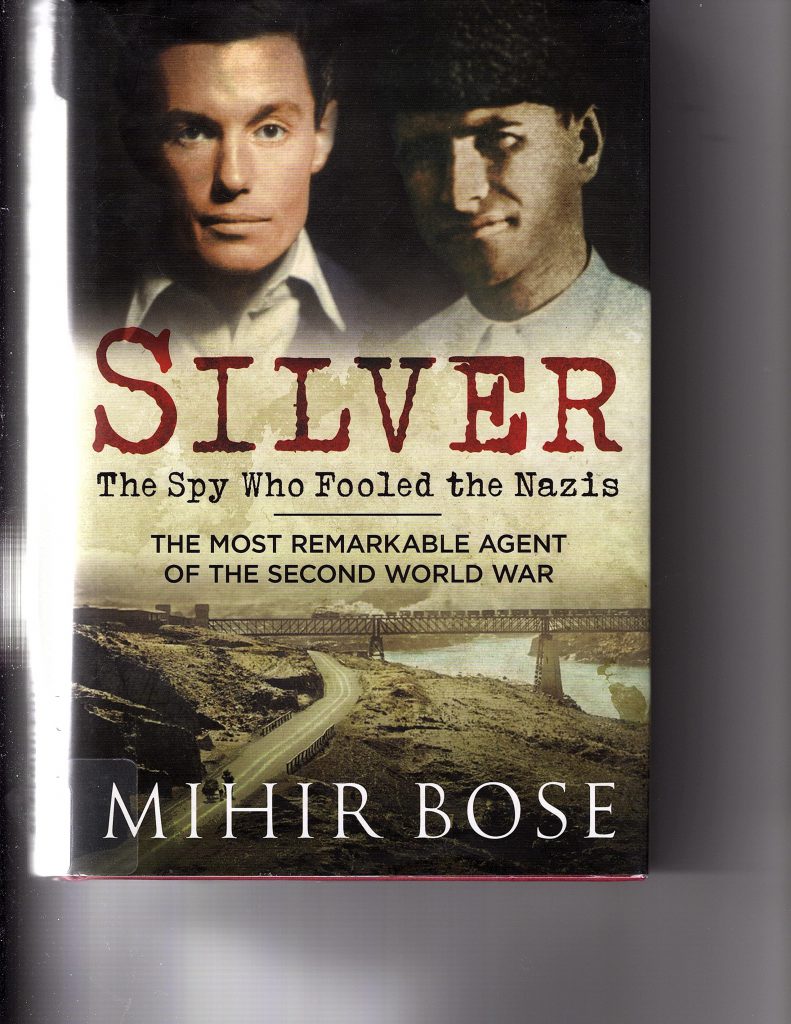Three months ago, the Editor of The Journal of Intelligence and National Security, Mark Pythian, informed me (see https://coldspur.com/special-bulletin-prosper-the-letter-to-jins/) that he was aware ‘that there is some debate and disagreement among historians’ on the question of the demise of the PROSPER network. Not knowing where such a debate was taking place, and, indeed, inferring from some of the statements made by such as Mark Seaman, the so-called ‘SOE historian’, that he judged that the matter had been satisfactorily closed, I solemnly inquired of Pythian: “Could you perhaps inform us [Patrick Marnham and me] which qualified and independent historians are involved in this debate, and where their arguments appear?”
Professor Pythian did not respond to my inquiry. And now, since a new contributor to the study of Henri Déricourt and the PROSPER network, Dr. Robert Lyman, has emerged, introducing some very provocative statements about the topic, I am happy to open the pages of coldspur to an inspection of Lyman’s claims. He has recently issued two bulletins concerning his research into Déricourt. I was mildly interested by the first, although I regarded its arguments with scepticism, but the second I found ill-mannered and arrogant, consisting largely of a reckless assault on Patrick Marnham, and his carefully compiled book on the collapse of the PROSPER network, War in the Shadows. I immediately sent an email to Lyman, expressing my dismay at what I considered a very unprofessional piece. He acknowledged what I wrote, but did not want to discuss it.
On reflection, it occurred to me that Mr. Marnham might want to respond to this undisciplined sally, and he was gratifyingly keen to accept my offer to post a response via coldspur. This Special Bulletin is thus dedicated to reproducing the text of Lyman’s second communiqué, followed by Marnham’s detailed response to several inflammatory or simply incorrect statements that appeared in Lyman’s reports. (For those of you not familiar with all of Mr. Marnham’s publications, I note here that his book, The Private Eye Story: the First Twenty-One Years, appeared in 1982.)
I defer to Marnham, and his eloquent and incisive response, for a thorough dismantling of Lyman’s pieces, but also take some space to record a few of my personal reactions to what Lyman wrote. First, I judged his approach to the research project utterly inappropriate. I found the pompous reference to his ‘Déricourt journey’ when he ‘hoped that the ahistoricisms of the conspiracists would in time die a natural death’ highly self-incriminating. It showed that he had effectively made his mind up before he started his research. In my view, he needs to be strongly criticised for this lack of scholarly curiosity and sense of objective inquiry. Second, Lyman appears to be mightily confused over many matters, but especially those of ‘double agents’, and the events of 1943.
In his first piece, Lyman wrote: “It was clear during the war that Henri Déricourt was a double agent . . .” Apart from the vagueness and easy refutability of such an absurd statement (clear to whom? – if so, he should have been shot as a traitor), Lyman in the second piece contradicts himself by writing: “The fact that Déricourt was known by some in SOE to have had contacts with the Germans was used as the extrapolated and exaggerated basis for suggesting that he must therefore have been a double-agent, working for the British while pretending also to work for the Germans.” As coldspur readers will know (see https://coldspur.com/dericourts-double-act/), the question of ‘double agents’ is a very complex one. Despite my invitation to Lyman several weeks ago to read (and discuss) my piece, he appears not to have done so, and continues to show his misunderstanding of these matters.
Lyman’s historical knowledge is also defective. He confuses the events of the summer of 1943 with the D-Day landings of June 1944, and poses the question: “Why would Britain go to all the effort to set Europe ablaze only to nefariously put out this fire by handing these nascent networks in France to the Gestapo?” But that is the wrong question. As I have explained before, the appropriate question would be: “Why would the PROSPER network have been encouraged to prepare for guerrilla activity to support an imminent landing when the Chiefs of Staff had recently forbidden the French Resistance to engage in any sabotage or paramilitary action?”
I leave readers to judge for themselves the wisdom of Lyman’s observations, and hope that you enjoy Patrick Marnham’s patient and careful response. I reproduce first the text of Lyman’s second bulletin, melodramatically titled ‘The Origins of the Prosper/Déricourt Conspiracy and the Death of Truth’.
Robert Lyman’s Second Bulletin
As many of you will know, I have embarked on my account of the traitor in SOE, Henri Déricourt. How much of a traitor I will reveal in due course, but suffice it to say he is not the smoking gun of Allied deception as some have and continue to claim. Nor was he responsible for the tragic fall of Francis Sutthill’s Physician reseau in June 1943. The fall of Prosper (Sutthill’s code name) is a tragic story, but Déricourt’s role in it was largely incidental. The story of Déricourt himself is, I believe, one that is simply told. It is one of human frailty and, above all, material greed. From a humble, even socially humiliated background, Déricourt was a man desperate to secure the material guarantors of respectability and build a life cushioned from the embarrassment of being a person of no consequence. Money lay at the heart of everything he did, as was a desire to be liked, to be respected, to be admired. My view – (though there is much more to come) – is that Déricourt was un espion très ordinaire, perhaps even just un petit espion. There is simply no evidence, circumstantial or factual, to suggest otherwise.
Yet over the years the maggots have crawled over the carcase of SOE, building a series of fanciful foundations for a building in which the role of Déricourt is made out to be a puppet in the evil hands of the deep British state. These buildings inevitably fall over in a moderate wind, though it is remarkable how many continue to be built, most by journalists, TV presenters or superannuated researchers for Private Eye. My book will, I hope, be one of those moderate winds, toppling the towers of Babel that the ignorant have and continue, sadly, to create. (Incidentally, as one who has worked in and for the British government, I always laugh at the notion of a ‘deep state’, one so secret that only a small cabal of evil genius’ – inevitably members of Boodles or Whites – pull the puppeteer’s strings. Anyone who has done likewise realises with a shock at an early stage in their career just how shallow this supposedly ‘deep state’ really is.)
Jean Overton Fuller, who spent much of her life fishing for answers in the sea that is the murky history of SOE, traced the origins of the conspiracists to the American journalist Anthony Cave Brown, who was notorious in historical circles for simply making things up. In Bodyguard of Lies, published in 1976, he posited the notion that Prosper had been deliberately fed information about deception measures about the forthcoming invasion of France. Somehow, though the logic of his thinking entirely evades me, members of the resistance would be fed information about the timing and location of the invasion that they would then feed, under torture, to their German captors. Parts of the resistance would thus be deliberately ‘burned’ (brûlée) by double-agents like Henri Déricourt, who in the uncritical imaginings of this argument, must surely have been employed by SIS, to ensure that the Germans would receive this important but false intelligence. Cave Brown never examined the illogicality of this argument. Why would Britain go to all the effort to set Europe ablaze only to nefariously put out this fire by handing these nascent networks in France to the Gestapo? The argument depended on the reality that in London someone believed the resistance to be so expendable that it could be deliberately expended for ‘the greater good.’ This, even to Cave Brown, would have been unbelievable were it not the work of the very highest person in the land, Winston Churchill himself.
Likewise, to believe this one needs also to believe in the malicious cynicism of some people in London who were (bizarrely) happy to aid and abet Gestapo terror. Indeed, the idea that agents of SOE would be deliberately and secretly given information about the greatest secret in London – that of the date and location of D-Day – in the hope that they would then blurt this information to their captors as their fingernails were being extracted, is – let’s call it for what it is – patently stupid. Likewise, the idea that MI6 would be allowed deliberately to set up parts of SOE for burning is equally fantastical. Yet this is what some people, prompted originally by Cave Brown and fed by others after him, seem to want to believe. Incidentally, there is a very well evidenced psychopathology of conspiracy, in which people want to believe in the existence of the puppeteers and their strings, and to build imaginary worlds in which these evil monsters prey on the rest of us. It seems to me to be the responsibility of sensible historians – and I include myself in this number – to do our best to bring these crazy structures crashing to the ground.
Cave Brown was followed by Larry Collins in 1982, with a novel called Fall from Grace in which – in his footnotes – he deliberately blamed Churchill for using Prosper to sow disinformation and, ultimately, to kill lots of brave Frenchmen. This is an obvious lie, as it hangs on a supposed meeting between Sutthill and Churchill. It is one, however, that people seem keen to believe.
Before long the BBC jumped on the bandwagon with a particularly ignorant analysis of Physician in a Timewatch programme in 1986 in which Déricourt was presented without any argument as an SIS spy. The fact that Déricourt was known by some in SOE to have had contacts with the Germans was used as the extrapolated and exaggerated basis for suggesting that he must therefore have been a double-agent, working for the British while pretending also to work for the Germans. The very idea of a double-agent made it very easy for people to make two plus two equal conspiracy and suggest that it was the obvious route by which those SOE agents with the carefully inserted bacillus were identified by the Abwehr and/or Gestapo and burned by the agent working for SIS. Déricourt thus became the puppet on SIS’s string. It was easy, thereafter, to identify the puppeteer. Find a person whom many people disliked within SIS and hey presto, this man, Claude Dansey, fitted the bill perfectly and a myth was created. Dansey and MI6 had suddenly become the evil genius’s of the British deep state that had attempted to burn Prosper and Physician as a means of infiltrating disinformation into German hands. As an aside, all the conspiracists have another weapon in their armoury. This is the accusation that the ‘deep State’ continues to withhold in the ‘SIS archives’ the real secrets of its perfidy.
Except that none of it, as rational people can see, is true. The supposedly logical steps that link these facts only existed in the imaginations of Cave Brown, Larry Collins and the BBC Timewatch team. They were speculations, and ill-founded ones at that. This didn’t stop one producer of the Timewatch team, Robert Marshall, from publishing All The King’s Men in 1988, which made up the calumny that Déricourt was an MI6 agent specifically directed to contact the Gestapo and to ‘burn’ Prosper. As Jean Overton Fuller asserts, and I agree, this was a deliberate libel of ‘three men, all of them dead: Churchill, Dansey and Déricourt.’ In 1992 a further book appeared by an ex-SOE agent Bob Maloubier, published only in France, written in collaboration with the novelist Jean de Larteguy. The same inflated charges were made, in which Déricourt and Churchill were presented as agents, literally, of the devil. Its excited claims make this supposed book of history yet another example of a fictional genre.
When I started out on my own Déricourt journey in 2012 I had rather hoped that the ahistoricisms of the conspiracists would in time die a natural death. In this I was naïve, for in 2021 Patrick Marnham produced War in the Shadows, which added a new spin to this stale story by alleging a link between the arrest of Prosper and that of Jean Moulin. Both men were arrested on 21 July 1943. I find this argument the least convincing of all, for Marnham is the epitome of the deep state conspiracist, alleging all sorts of imaginary policies and relationships on the basis of excited speculation. I too have been through the Déricourt files and simply don’t accept the speculative interpretation he places on a couple of the files and which form the basis of his proposition regarding Déricourt.
My book will be no where as exciting as the semi-fictional accounts presented by Cave Brown, Collins, Maloubier and Marnham, but the facts need to have their say. I hope that mine will do just that. The dead of SOE deserve nothing less.
Patrick Marnham’s Response
In two recent website posts a historian based in Oxford, Robert Lyman, has announced that he is writing a book about Henri Déricourt, the French pilot trained by SOE in 1942 to work in France as an air movements officer. Déricourt was also a paid agent of the Paris Gestapo. In both articles Lyman refers to my book War in the Shadows in which I told the story of the downfall of the SOE network ‘Physician’ (better known as PROSPER after the codename of its commander Francis Suttill). At the time of its downfall in June 1943 PROSPER was SOE’s largest network in Occupied France.
The conclusion I reached in that book, after many years of research in British and French archives, was that the loss of PROSPER was connected to a deception operation run by British Intelligence codenamed ‘Starkey’, and that Déricourt’s activities on behalf of the Gestapo were known to British Intelligence which had continued to employ him in that deception operation as a ‘double’ agent. In the book I produced documentary evidence that showed, for the first time, a direct connection between the traitor/double agent Déricourt and Claude Dansey, the executive head of MI6, who was one of those directing ‘Starkey’.
Lyman’s reasons for writing about Déricourt are unclear. Is he setting out on an open-minded enquiry into the fate of PROSPER? Or is he simply intending to bolster the longstanding official version of PROSPER’s failure? – i.e. that it was not connected to a British Intelligence operation but was chiefly due to German police work and the incompetence of Francis Suttill and his colleagues. I ask the question because Lyman’s chief interest in both papers appears to be discrediting my arguments through misrepresentation and occasional abuse.
Defending the official version of history is a perfectly reasonable position, although a rather slim basis for a new book. But in neither of his initial articles does Lyman produce any fresh evidence. Nor does he attempt to fill any of the gaping holes in the official account. His research is clearly incomplete, because he makes no mention of any of the French archives or authorities. Yet even before he has completed his research he announces where it will lead him.
Lyman’s criticisms are imprecise and confused. He frequently refers to several earlier books that queried the official account but then muddles up the conclusions reached, over a period of 30 years, by their several authors. He next attributes conclusions found in their work to mine. Although his first paper was brief, he found room in it for several factual errors. Since Lyman fails to publish any new evidence one is left with nothing to dispute.
In his second article he abandons any pretence of objectivity and digs himself into several deep holes.
Lyman’s second article (His words in ITALICS, my response in BOLD).
As many of you will know, I have embarked on my account of the traitor in SOE, Henri Déricourt. How much of a traitor I will reveal in due course, but suffice it to say he is not the smoking gun of Allied deception as some have and continue to claim. Nor was he responsible for the tragic fall of Francis Sutthill’s Physician reseau in June 1943.
The enquiry is into the reasons for the arrest of Major Francis Suttill. Suttill’s name is misspelt, throughout this paper.
The fall of Prosper (Sutthill’s code name) is a tragic story, but Déricourt’s role in it was largely incidental.
Déricourt was not responsible for the arrests of 21-23 June, and I have never suggested that he was. But his role in ‘PROSPER’s destruction was clearly more than ‘incidental’ since he had been arranging for the Gestapo to observe SOE landing operations, and track the incoming agents, for months. Furthermore he had been showing SOE agents’ correspondence to Boemelburg at Gestapo HQ in Paris. This helped the Gestapo to convince Gilbert Norman and ‘Prosper’ – and several other captured agents – that there was a German spy in Baker St. And this made stubborn resistance to interrogation appear to be pointless. In consequence, the arrest of five SOE agents was followed by the identification of hundreds of French resisters.
The story of Déricourt himself is, I believe, one that is simply told. It is one of human frailty and, above all, material greed… There is simply no evidence, circumstantial or factual, to suggest otherwise. Yet over the years the maggots have crawled over the carcase of SOE…
The ‘maggots’ in this remarkably silly reference are various historians Lyman sets out to discredit – notably Anthony Cave Brown, Robert Marshall and myself. He does not mention any of the leading French authorities with their contrasting views, such as Azema, Wauquiez, Michel, Noguères, Douzou, Bedarida, Guillaume, Dreyfus, Aron, etc. He makes no reference to the records in the Archives nationales, the Service historique de la défense or the numerous national and departmental archives available in France. Nor does he refer to the published work of Resistance and Gaullist veterans such as Cordier, Aubrac, Frenay, Passy, Cremieux-Brilhac and so on. The consensus over the years among many French historians is that the destruction of PROSPER was collateral damage in a British deception operation.
… Yet over the years the maggots have crawled over the carcase of SOE, building a series of fanciful foundations for a building in which the role of Déricourt is made out to be a puppet in the evil hands of the deep British state.
‘Maggots’ are apparently erecting ‘a building’ which turns out to be ‘a puppet’ (?) There is a good rule about writing. If you are not writing clearly it is probably because you are not thinking clearly.
… a puppet in the evil hands of the deep British state.
This is a clumsy attempt to associate War in the Shadows with the current plague of ‘false news’. I have absolutely no interest in, and have never theorised about, a peacetime ‘deep British state’. The evidence of complex depths in the structures of wartime intelligence has emerged slowly over the last 75 years from the work of reputable historians such as Morgan, Masterman, Howard, Hesketh, Bennett, Holt, Mackenzie, Jeffery – and so on. After the war everything possible was done by the British intelligence agencies to conceal the existence of this wartime structure for predictable and responsible reasons of peacetime policy.
These buildings [we are back with Lyman’s ‘maggots’– see above] inevitably fall over in a moderate wind, though it is remarkable how many continue to be built, most by journalists, TV presenters or superannuated researchers for Private Eye.
Oh dear me… Journalists in the archives!! Whatever next? Superannuated infantry officers?
The American journalist Anthony Cave Brown… was notorious in historical circles for simply making things up.
Anthony Cave Brown was not American. He was an experienced British newspaper reporter who counted Philby, Boris Pasternak and Vivian Fuchs among his contacts and covered the Hungarian uprising, as well as wars in Algeria and Vietnam. After retiring from journalism he carried out a prodigious amount of original research, mostly in US archives, into WWII intelligence matters. Unfortunately he tended to publish far too much of his raw material. He was actually better known for exaggerating his conclusions rather than ‘making things up’. Not used by me as a source, except for one brief reference to his interview with the wartime chief of MI6/SIS. Cave Brown’s book had absolutely no connection with my conclusions. Where possible I restricted use of Cave Brown, Robert Marshall and JO Fuller to information that could be corroborated from another source. Lyman fails to mention that, apart from being unevenly reliable, Cave Brown was the first writer to reveal the existence of Operation Starkey. Robert Marshall built on his work by conducting invaluable interviews with wartime intelligence veterans.
In Bodyguard of Lies, published in 1976, Anthony Cave Brown posited the notion that Prosper had been deliberately fed information about deception measures about the forthcoming invasion of France…
I have never suggested that agents were fed false information about D-Day in 1944 since I was concerned with the summer of 1943. For my explanation of the false info’ that agents were fed during Operation Starkey in 1943 see War in the Shadows, in particular Chapter Seven and pp. 108-113 and 288-290).
The argument depended on the reality that in London someone believed the resistance to be so expendable that it could be deliberately expended for ‘the greater good.’
No. The loss in June 1943 of one SOE network that had already been penetrated by the Paris Gestapo, via Déricourt, did not equate to the destruction of the French Resistance.
…The idea that agents of SOE would be deliberately and secretly given information about the greatest secret in London – that of the date and location of D-Day – in the hope that they would then blurt this information to their captors as their fingernails were being extracted, is – let’s call it for what it is – patently stupid.
Once again, we are in June 1943. Operation Starkey had nothing to do with D-Day. What is ‘patently stupid’ is to attack a book – War in the Shadows – repeatedly, for material that it does not contain. Those who were fed false information in the early summer of 1943 about the likelihood of early landings in France included the head of ‘F’ section SOE, Maurice Buckmaster, and the SOE agents Francis Suttill, France Antelme and Claude de Baissac, as well as the political and military leaders of the French Resistance, Jean Moulin and Charles Delestraint.
Likewise, the idea that MI6 would be allowed deliberately to set up parts of SOE for burning is equally fantastical. Yet this is what some people, prompted originally by Cave Brown and fed by others after him, seem to want to believe.
In War in the Shadows there is no question of ‘deliberately setting up parts of SOE’. The deputy head of SOE, and several other senior intelligence officers were among the ‘some people’ who were informed, early in the summer of 1943, that a decision had been taken to ‘make use’ of the discovery that PROSPER had been infiltrated by German intelligence.
Incidentally, there is a very well evidenced psychopathology of conspiracy, in which people want to believe in the existence of the puppeteers and their strings, and to build imaginary worlds in which these evil monsters prey on the rest of us.
Of course there were wartime intelligence ‘conspiracies’. The repetition of Foot’s original glib dismissal is usually evidence of lazy, convenient and/or officially directed research. The real reason why the official account continues to be queried is because it is so implausible. It has nothing to do with ‘psychopathology’ – (another discipline in which Lyman may not be entirely reliable).
It seems to me to be the responsibility of sensible historians – and I include myself in this number– to do our best to bring these crazy structures crashing to the ground. Cave Brown was followed by Larry Collins in 1982, with a novel called ‘Fall from Grace’ in which – in his footnotes – he deliberately blamed Churchill for using Prosper to sow disinformation and, ultimately, to kill lots of brave Frenchmen. This is an obvious lie…,
No. It’s not. Larry Collins was a novelist. It’s a novelist’s invention. Novelists tend to do that. It’s their job. I have never read this novel which is totally irrelevant to my own research.
… This is an obvious lie, as it hangs on a supposed meeting between Sutthill and Churchill. It is one, however, that people seem keen to believe.
The groundwork for this ‘imaginary’ meeting between Churchill and Suttill was not laid by a novelist but by Professor MRD Foot, who in 1966 published the wrong date for ‘Prosper’s return to France (SOE in France, pp. 308-9) and did nothing to correct it until 2004. [See War in the Shadows p. 245, and Antony Percy in Coldspur, 30 January 2023, 31 August 2022, passim]. Incidentally, Lyman does not seem to know that Professor Foot was among those prepared to believe that Churchill did sometimes summon SOE agents to his office in order to deceive them. (see Foot SOE: 1940-46 p.43, and War in the Shadows p. 245).
The fact that Déricourt was known by some in SOE to have had contacts with the Germans was used as the extrapolated and exaggerated basis for suggesting that he must therefore have been a double-agent… The very idea of a double-agent made it very easy for people to make two plus two equal conspiracy… Déricourt thus became the puppet on SIS’s string. It was easy, thereafter, to identify the puppeteer. Find a person whom many people disliked within SIS and hey presto, this man, Claude Dansey, fitted the bill perfectly and a myth was created.
To return to the facts: the sheer nastiness of Claude Dansey is hardly ‘mythical’ and has been vividly described by several of his colleagues. And in War in the Shadows I established both Dansey’s involvement in Operation Starkey and I published for the first time the evidence of his direct interest in the operational activities of Déricourt.
As an aside, all the conspiracists have another weapon in their armoury. This is the accusation that the ‘deep State’ continues to withhold in the ‘SIS archives’ the real secrets of its perfidy.
And what would Lyman know about SIS/MI6 archives? Is he in the privileged position of reading them? Or has he been given ‘assurances’ – such as Leo Marks was given before his SOE coding records were destroyed by MI6? EVERY SIS FILE IN THE SOE ARCHIVE HAS BEEN REDACTED. Professor Foot (in 1966) said that he was not allowed to consult SIS records, and his research into SOE was closely monitored by an SIS officer. Professor Howard (in 1990) said that he had seen a large amount of information about deception operations which would never, to his regret, be published. TA Robertson – who ran the XX Committee’s deception agents during the war – noted in Déricourt’s security file that he held ‘valuable information’ about Déricourt that would ‘greatly supplement what appears on our files’ (War in the Shadows, p.284). For an intelligence historian Lyman seems to be remarkably incurious.
When I started out on my own Déricourt journey in 2012 I had rather hoped that the ahistoricisms of the conspiracists would in time die a natural death. In this I was naïve, for in 2021 Patrick Marnham produced ‘War in the Shadows’, which added a new spin to this stale story by alleging a link between the arrest of Prosper and that of Jean Moulin. Both men were arrested on 21 July 1943. I find this argument the least convincing of all, for Marnham is the epitome of the deep state conspiracist, alleging all sorts of imaginary policies and relationships on the basis of excited speculation.
It is Lyman who seems to be getting excited. (In his first letter he described me as ‘a great writer and a fabulous researcher’. Subsequently, I apparently went off my trolley). My arguments are not ‘imaginary’ but are based on interviews with French Resistance veterans, the records of the post-war treason trials in Paris, the depositions of captured SS officers who had worked with Karl Boemelburg and the full transcript of an interrogation of two of the principal characters in the story by six French historians.
I too have been through the Déricourt files and simply don’t accept the speculative interpretation he places on a couple of the files and which form the basis of his proposition regarding Déricourt.
For Lyman’s information, my conclusions are not ‘based on a couple of’ the Déricourt files in the National Archives at Kew. They are developed over the length of the book. Research started in the Diocesan Archives in Lyons in 1985 and continued, on and off, over the next 35 years in England and France. It has led to two books, so far. The source notes include identified documentary references drawn from five official archives in three countries, with additional information from both Nazi and Soviet records. The bibliography and notes run to 26 pages, and my research was highly commended by an Oxford University historian considerably more distinguished than Lyman – who described it as an entry ticket ‘for ‘the Oxford History Faculty’.
My book will be no where [sic] as exciting as the semi-fictional accounts presented by Cave Brown, Collins and Marnham…
When Lyman has actually published a book on this subject and produced the evidence which has so far evaded him it may be possible to have a debate. Until then I hope he will understand if I regard his reflections as ill-informed bluster rather than research.
… The facts need to have their say. I hope that mine will do just that. The dead of SOE deserve nothing less.
This mawkish reference to ‘the dead of SOE’, is little to Lyman’s credit. I have at least as much respect as he claims for the men and women who survived, or died in, that war. I certainly knew hundreds more wartime survivors than Lyman has ever met. Their courage and self-sacrifice gave my generation a lifetime of peace. The study of history depends on discussion, disagreement and revision, not unsourced assertions and personal abuse. The task of all ‘sensible’ historians – 80 years after the death of those gallant men and women – is to respect them sufficiently to continue enquiring into how and why they died.

